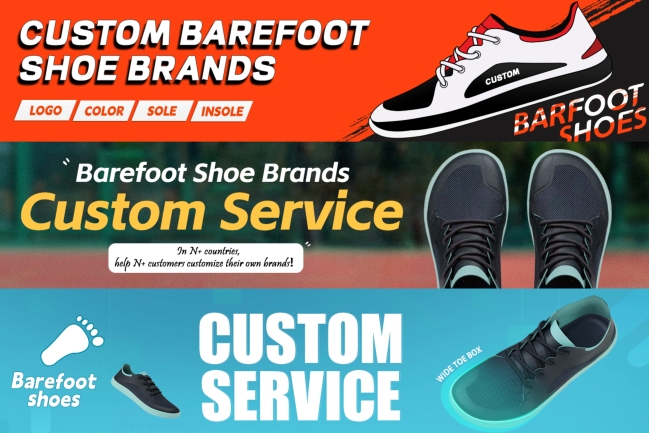In the long journey of pursuing equality in the workplace, freedom of dress has always been a seriously underestimated but crucial issue. The arrival of “Pride Month” every June offers us an opportunity to re-examine those deeply rooted gender norms in the workplace culture. Against this backdrop, the “gender-neutral design” Barefoot Shoes that have emerged in recent years are quietly leading a silent revolution. They not only redefine the possibilities of summer workplace attire but also provide a breakthrough for the LGBTQ+ group, allowing them to freely express their identities while maintaining a professional image.
1.Deconstructing Tradition: The Gender Shackles in Workplace Attire
To understand the significance of this revolution, we first need to face up to the systematic gender divisions that exist in traditional workplace attire. In most modern workplaces, the intangible dress code is still based on strict gender dualism – men are expected to wear lace-up shoes and formal suits to show “masculinity”; Women were required to wear high heels or specific styles of women’s shoes to demonstrate “feminine charm”. This distinction not only reinforces outdated gender stereotypes, but also constitutes a structural oppression of diverse gender identity groups.
For transgender people, being forced to choose footwear that does not align with their gender identity may trigger severe gender anxiety. For those who are not binary, being forced to choose between the options of “either male or female” is in itself a form of violence. Even for cisgender homosexuals, dressing that deviates from gender norms may lead to micro-discrimination in the workplace and even directly affect career development. Ironically, in the hot summer, many people have to endure traditional leather shoes that are stuffy and not breathable or high heels that cause friction in order to maintain their so-called “professional image”. To some extent, this kind of pain has become a metaphor for “obeying gender norms” in the workplace.
2.Barefoot Philosophy: From Health Concepts to Gender Liberation
Barefoot shoes initially came into the public eye as a revolution in foot health. This type of footwear emphasizes minimalist design, wide toe space and a heel to toe drop sole, aiming to simulate the natural state of human barefoot walking to the greatest extent. However, this functional design centered on ergonomics has unexpectedly become a powerful tool to break gender boundaries – because it fundamentally dismemberes those elements in traditional footwear design that deliberately emphasize gender differences.
By closely observing the gender-neutral barefoot shoes, we can summarize the following key features:
Color neutralization: Basic color series such as off-white, dark gray, and pure black are generally adopted, avoiding the traditional sexization of colors that “light blue represents men and pink represents women”
Minimalist decoration: Completely abandon the sexy curves of high heels and the heavy contours of men’s leather shoes and other gender-stereotypical decorative elements
Size integration: Offers a full size range from children to adults, without using “men’s and women’s styles” as the distinction standard
Humanized design: Prioritizing foot health over gender expression, returning to the most essential function of clothing, which is to “serve people”
This “de-gendered” design philosophy makes barefoot shoes naturally the ideal choice for the LGBTQ+ group in the summer workplace – they not only meet the basic requirements of professional occasions but also avoid compromising on traditional gender expectations, maintaining professionalism while safeguarding individual identity dignity.
3.Free Practice: Workplace Application Scenarios of Gender-neutral Footwear
In the hot summer, the genderless nature of barefoot shoes offers unprecedented freedom in dressing for all kinds of professionals. Let’s understand the practical significance of this transformation through several specific scenarios:
A comfortable choice for transgender employees
For transgender employees in the transition period, choosing what shoes to wear every morning can be a psychological struggle. Traditional men’s shoes may intensify their gender anxiety, while wearing obviously feminine shoes directly may draw excessive attention from colleagues. Lightweight and breathable gender-neutral barefoot shoes offer a perfect middle choice – avoiding the stuffiness and discomfort of traditional summer leather shoes without reinforcing non-self-identifying gender expressions. Sarah, a transgender female employee of a certain technology company, shared, “In the early days of hormone therapy, it was almost impossible to find a pair of workplace shoes that were both in line with female identity and not out of place until I discovered gender-neutral barefoot shoes.”
The true presentation of non-binary individuals
For working professionals who identify as non-binary, being forced to choose between “male” and “female” shoe styles every day is in itself a kind of oppression. Many professional barefoot shoe brands have launched product lines clearly marked as “genderless”, finally providing them with choices that truly align with their self-identity. Alex, the creative director of an advertising agency in New York (using the pronoun “they”/” them “), said, “When I first wore gender-neutral barefoot shoes to a client meeting, the feeling of not having to explain myself and not having to compromise made me feel my complete self for the first time in the workplace.”
A safe way to challenge stereotypes
Even cisgender gay employees can subtly challenge gender norms in the workplace through gender-neutral footwear. Compared with wearing obviously “transgender” clothing directly, choosing gender-neutral barefoot shoes is a safer and less controversial way to express oneself. This mild resistance is particularly suitable for LGBTQ+ individuals working in conservative industries, who can gradually change their gender concepts in the workplace without endangering their career development.
The concrete manifestation of enterprise inclusiveness
When a company’s human resource policy explicitly allows or even encourages gender-neutral footwear, it conveys a substantive respect for multiple identities. Many leading technology companies in Silicon Valley have incorporated gender-neutral dress codes into their DEI(Diversity, Equality and Inclusion) policies. Google’s diversity director once said, “True inclusion begins with these everyday details – allowing employees not to have to make painful choices between professional image and self-identity.”
4.Industry Transformation: Market Prospects and Challenges of Genderless Design
This genderless design revolution led by barefoot shoes is accelerating worldwide. According to the latest research report of Mordor Intelligence, the global gender-neutral clothing market is expected to grow to a scale of 6 billion US dollars in 2025, with a compound annual growth rate of 7.2%. It is worth noting that footwear products play a pioneering role in this trend, as shoes are often one of the most gendered clothing categories.
However, this transformation also faces challenges that cannot be ignored:
Industry inertia: Traditional footwear manufacturers find it difficult to break away from the deeply rooted gender design thinking
Consumer perception: Some consumers still equate “genderless” with “feature-less”.
Sizing system: How can the existing sizing system better serve the diverse body type demands
Workplace resistance: The reform of dress codes in conservative industries is progressing slowly
Despite this, emerging brands represented by Allbirds and Toms have demonstrated that footwear products that balance comfort, sustainability and gender-neutral design have huge market potential. The success of these brands also demonstrates an important fact to the entire industry: when design truly centers on people’s needs, gender boundaries naturally become blurred.
5.Towards the Future: The Next Step towards Workplace Equality
Although the gender-neutral design of barefoot shoes may seem like a minor innovation, it points to a deeper direction of workplace culture transformation – the workplace should not be a space that suppresses individual identity, but rather a place where everyone can be themselves comfortably. The significance of this transformation goes far beyond clothing itself. It concerns how we view individual dignity and diverse values in the workplace.
On a broader level, this revolution that began with shoes reminds us that true equality starts with the details of daily life. When we rethink “What kind of shoes can be regarded as professional”, we are actually challenging those power structures that are taken for granted. Sociologist Dr. Emma Johnson pointed out in her book “The Politics of Clothing” : “Clothing norms are one of the most subtle and effective forms of social control because they internalize power relations as self-supervision.”
This summer, perhaps we can start with our feet and take a new step towards equality in the workplace. When a pair of shoes can simultaneously meet professional requirements, health needs and identity expression, we are a little closer to a truly inclusive working environment. After all, on the path of pursuing professional excellence, everyone should have the basic right to choose how to walk comfortably. Whether it is the LGBTQ+ group or cisgender heterosexuals, the ultimate beneficiaries of genderless design will be all professionals – because it returns to the most essential purpose of clothing: to serve people’s needs, rather than to reinforce social norms. This proud month, let’s not only celebrate the progress we have made, but also recognize how seemingly minor innovations like genderless barefoot shoes can truly change People’s Daily workplace experience and make the summer office a more inclusive and humanized space.
Contact us and let your equality start with your feet.




